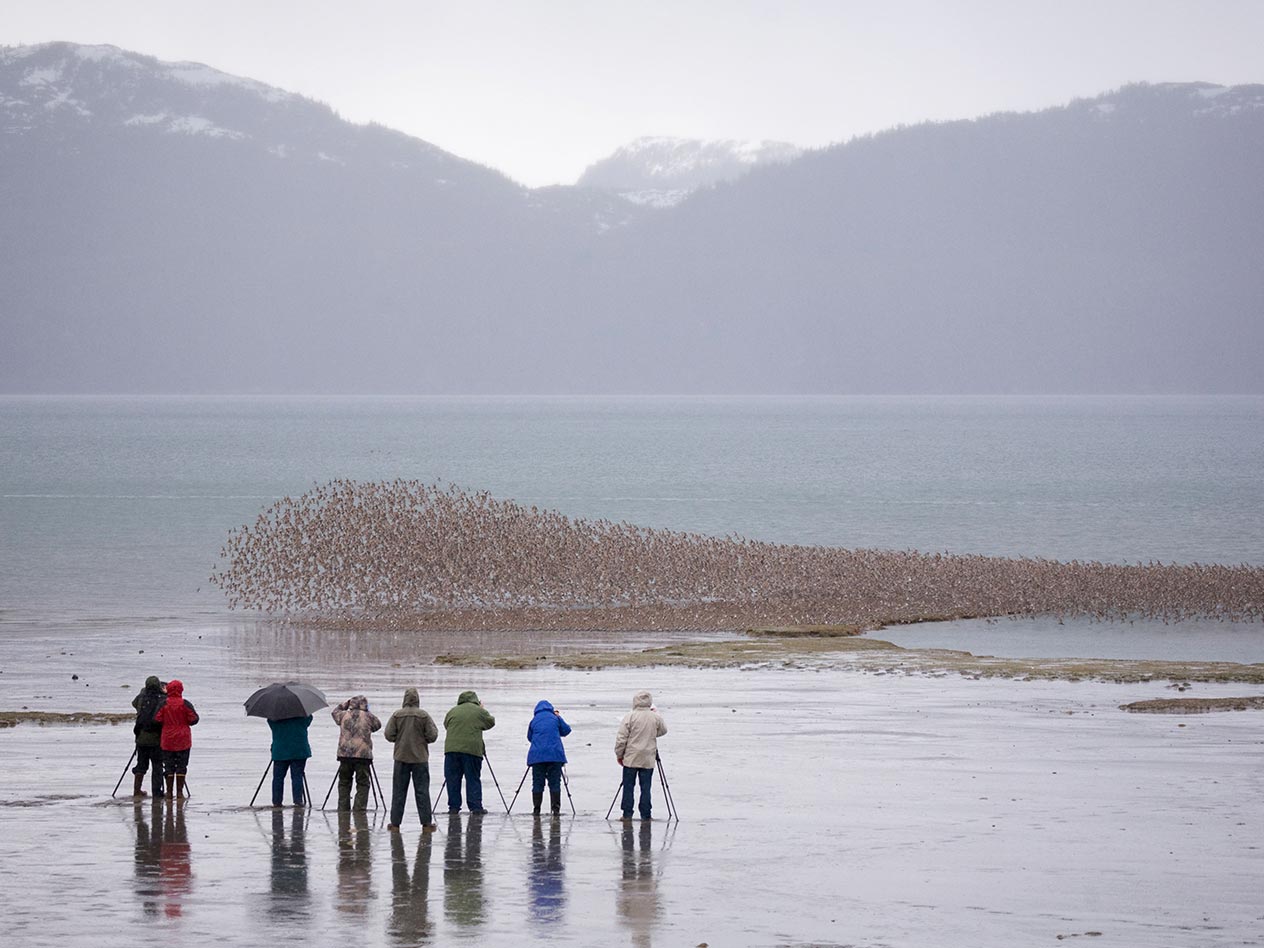
From the Autumn 2022 issue of Living Bird magazine. Subscribe now.
Birders flock to Alaska to get a glimpse of rare birds such as a Bluethroat. Often, they shell out money getting to remote locations that most tourists don’t frequent, and spend more money once they get there.
Tobias Schwoerer, an assistant professor at the University of Alaska-Fairbanks, wanted see how how long birders stay compared to other visitors, how much they spend, and how those dollars trickle through the economy.
Schwoerer led a study published in July in the scientific journal PloS One that tapped into data collected from the Alaska Visitors Statistics Program.
The study also incorporated data from the Cornell Lab of Ornithology’s eBird database to see where and when people were reporting birds in Alaska. The study found that birders were ideal tourists. Compared to the average tourist, they spent 56% more money; engaged in twice as many activities, like guided tours; stayed four days longer; and traveled to more remote areas. In all, birders spent $378 million in Alaska in 2016.
“More detailed, fine-tuned studies can look into what’s driving the demand,” Schwoerer said. “Current marketing strategies are focused on the cruise ship sectors. But the local communities can benefit from the development of small-scale nature-based niche markets like birdwatching.”
This story was adapted from a post on TWS Wildlife News, published by The Wildlife Society.

